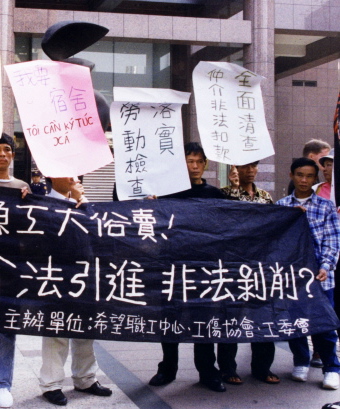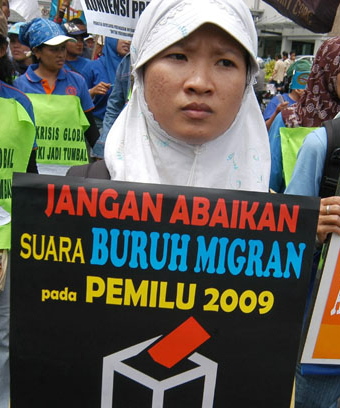Entertainment, violence and inclusion all play a part in the circumcision practices of a remote corner of Southeast Sulawesi
Brooke Nolan
Ibu Ratna and I entered the house. The room was full of people. It was noisy and hot. People had come for the free circumcisions. The penises of boys between the ages of nine and twelve were being cut on the creaking wooden table in the corner. On the table were old rags, open packages of needles, bloody bandages, dirt and dust. The room smelled of fish, which was what usually went under the knife on these tables.
Ibu Ratna is a civil servant from the Department of Health. She was on Wawonii, an island in Southeast Sulawesi, for the afternoon to deliver free medication for the event. Two young men in their twenties held blades and needles over the penises of the half-naked boys. Ibu Ratna pushed me through the throng of people who had gathered to watch.
I thought of the circumcision ‘ceremonies’, ‘rituals’ and elaborate-sounding ‘rites of passage’ I’d read about in anthropological literature before coming to Wawonii. This was something else altogether. The boys were cut briskly, cotton wool was dabbed on bleeding flesh, crying boys given pink lollipops and urged to pray. There were many boys to get through and Ibu Ratna and her colleagues intended to be back on the boat to the regional centre of Unaaha on the mainland before sunset. No one wanted to spend a night on an island where nothing happened, a place routinely mocked by Health bureaucrats for its apparent backwardness.
Compared to the boredom by which afternoons in Wawonii were often characterised, the blunt cutting and bleeding of genitals was a real spectacle. In Kendari, nearby on the mainland, you went to the cinema to be entertained by horror films in the afternoon. In Wawonii, it happened right before your eyes, for free. Well, not quite. The boys were certainly paying. They would continue to pay as they hobbled around gingerly, legs wide apart, barely able to walk over the coming days. Most of them would need time off school. Some would end up at the clinic, presenting infected genitals to nurses. As with every spectacle in Wawonii, this one was noisy, exhausting and dirty. Children tripped over each other and the women prattled as the makeup they had applied (perhaps to show the bureaucrats from Unaaha that they were not in fact ‘backward’) dripped off their faces. The men were in a cluster at the doorway, smoking limp cigarettes, spitting and giggling whenever someone said something lewd, which was often.
In places where nothing happens, the bar for what counts as entertainment is set very low. In theory, as Wawonii people explained to me, circumcision was an Islamic ritual, but in practice it just seemed like something for people to do, a way of avoiding boredom (at home) or exhaustion (in the rice fields).

But the half-naked boys lined up waiting for their foreskins to be cut off were not entertained. They were at the centre of the spectacle – catalysts for the scurrilous banter going on around them. Sweating and unusually silent, they clutched their sarongs. They were untouched by the cacophony around them. The blade, blood and mutilation of their own precious flesh was all they saw.
What they heard was not much better. Women – their mothers, aunts, teachers, neighbours – huddled together close to the dirty table commenting on the size and shape of the boys’ penises, for the whole room to hear. Whether the women pronounced them small or big, the result was the same: Guffaws ensued. The slitting continued.
In normal day-to-day life, it was the boys who were chastised by these women for saying things considered obscene, things alluding to sex-flesh usually kept hidden. Now their positions had been reversed. The boys were waiting for their turn, on chairs or hovering in the doorway. Once on the table, they lifted their sarongs, shut their eyes, and submitted to the blade. One of the young men performing the circumcisions I recognised as a Wawonii nurse. Ibu Ratna told me the other man was a colleague of hers from the Department of Health in Unaaha.
Before commencing each circumcision, the men looked downwards and whispered ‘Bismillah ar-Rahman ar-Rahim’ (In the name of God, The Compassionate, The Merciful). Then they injected the boys’ penises with an anaesthetic, pulled the foreskin to the top and tried to cut it. Sometimes they had to hack away at the foreskin several times before it was properly severed. Blood dripping onto the table was wiped off with already-bloody cotton wool. Ibu Ratna sighed and stated the obvious: they had not brought enough supplies with them. The nurse from Unaaha was dexterous enough to wipe the blood, take a drag on his cigarette and entertain the crowd all at the same time. His gloves, the only pair he wore while I was there, were as filthy as the cotton wool strewn around the creaking table.
At one point, a boy halfway through his circumcision started shrieking. Blood squirted onto the shirt of the nurse as the boy jerked away from the blade. The women hollering orders to pray simply did it louder. The boy moved his hand towards his penis. One of the hollering women grabbed both his hands and held them above his head. The other woman held the boy’s shoulders down. They laughed. The boy wailed. The nurse simultaneously took a drag on his cigarette and a photo of the boy’s penis on his phone.
When the laceration was complete, the nurse took another drag on his cigarette and held the bloody foreskin up like a gruesome trophy for all to see. Predictably, giggling ensued. The nurse wiped the sweat off his forehead before wiping the blood off the boy’s penis and wrapping a bandage around it. The boy hobbled to his feet before the blood could be wiped from his thighs. He pushed awkwardly, legs wide apart, through the pack of squealing children and thudded onto a ripped couch, ignoring the woman who tried to thrust a lollipop into his hand. I asked Ibu Ratna if the boy’s parents were in the room. She said she did not know.
‘Hey! Come here!’ The local nurse pointed at the next boy, who shuffled forward, head down, thin fingers clutching his sarong.
The boy was soon flat on the table.
Showing that he was as dexterous as his chain-smoking colleague, the nurse lifted the boy’s sarong up past his hips with one hand and took a photo on his phone with the other.
The slitting continued.
****
Everyday life in Wawonii villages involves inflicting and withstanding different types of violence. People accept certain forms of violence in order to avoid others. Although this sometimes involves overt, visible forms of violence, it is not limited to that. Undergoing a momentary form of physical violence such as circumcision may be a method of avoiding greater and more consequential forms of violence: social stigma, being forbidden from entering a mosque or going on the hajj, having prayers unheard and unanswered, and having one’s place in the universal community of Muslims known as the ummah called into question.
Inclusion in the ummah
Approximately 30 per cent of the world’s population has been circumcised. Although it is contested, male circumcision is practiced by some members of all three Abrahamic religions – Christianity, Judaism and Islam. In Muslim communities in Indonesia and beyond, there is a general consensus that boys must be circumcised in order to perform ablutions and enter a mosque. Muslims against circumcision often cite the Qur’anic command ‘Let there be no alteration in Allah’s creation (30:30)’. Muslims in support of male circumcision argue that three out of the four fundamental sections of Islamic law – the Sunnah (the Prophet Muhammad’s sayings), Ijma’ (the consensus by religious scholars) and Qiya (the legal reasoning based on the Qur’an) – clearly state that male circumcision must be performed by Muslims.
By linking Wawonii people to the ummah and situating them within a common religious community, circumcision in Wawonii displays certain constructive aspects. It may be understood as violence as a means of inclusion. Seen this way, the violence associated with circumcision is not merely about repression or destruction – it is also productive. In linking people to the ummah, it helps produce and perpetuate relations between Muslims around the globe. As Wawonii people pointed out to me, a circumcised child enters the ummah, becoming a fully recognised member of the greater community of Muslims. Circumcision thereby creates linkages. Processes of separation and integration were being enacted as ‘Bismillah ar-Rahman ar-Rahim’ was said above the old table that stank of fish. As they were dispossessed of their foreskins, the boys, deemed clean enough to perform ablutions and enter mosques to pray, secured their positions within the ummah.
The Wawonii people I spoke with clearly saw the practice of circumcision as one condition of entry into the ummah. The social requirement to be circumcised was closely associated with local conceptions of cultural, moral and religious belonging. Circumcised boys were welcomed into local, national and global communities of Muslim men. Circumcision conferred on them the rights and responsibilities of being a member of these groups. Furthermore, such membership acted as a counterbalance against perceptions of being a peripheral, unimportant, ‘traditional’ group of people (compared with, say, the Javanese). As they conveyed in their conversations with me, Wawonii people therefore saw circumcision as being a positive act in the long-term, despite the possibility of short-term pain, humiliation or even infection. Done in the prescribed manner, circumcision shows the body to be a space where social, physical and religious transitions occur.
Entertainment, violence or inclusion? Willingly or not, as they submitted to the blade, these pre-pubescent boys were caught up in a hasty practice encompassing all three.
Brooke Nolan (borneobrooke@gmail.com) is a PhD student at the University of Western Australia who conducted a year of ethnographic research on Wawonii between 2013 and 2014.














